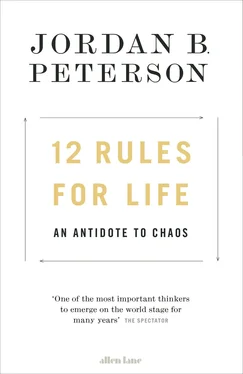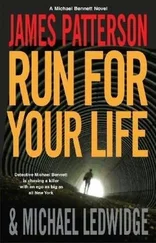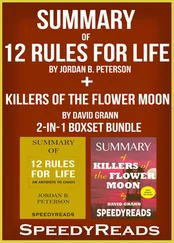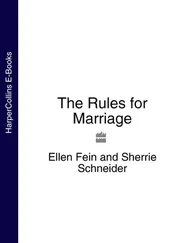Ibid., section 2.
Ibid., section 3.
Ibid,, section 8.
Ibid., section 4.
Ibid., section 12.
Ibid., section 13.
Ibid., section 14.
Ibid., section 7.
Ibid.
Ibid., section 8.
Ibid.
Ibid., section 33.
Goethe, J.W. (1979b). Faust, part two (P. Wayne, Trans.). London: Penguin Books. p. 270.
There are very useful commentaries on every Biblical verse at http://biblehub.com/commentaries/ and specifically on this verse at http://biblehub.com/commentaries/genesis/4-7.htm
“For whence/ But from the author of all ill could spring/ So deep a malice, to confound the race/ Of mankind in one root, and Earth with Hell/ To mingle and involve, done all to spite /The great Creator?” Milton, J. (1667). Paradise Lost, Book 2, 381–385. Retrieved from https://www.dartmouth.edu/~milton/reading_room/pl/book_2/text.shtml
Jung, C.G. (1969). Aion: Researches into the phenomenology of the self (Vol. 9: Part II, Collected Works of C. G. Jung): Princeton, N.J.: Princeton University Press. (chapter 5).
http://www.acolumbinesite.com/dylan/writing.php
Schapiro, J.A., Glynn, S.M., Foy, D.W. & Yavorsky, M.A. (2002). “Participation in war-zone atrocities and trait dissociation among Vietnam veterans with combat-related PTSD . ” Journal of Trauma and Dissociation, 3 , 107-114; Yehuda, R., Southwick, S.M. & Giller, E.L. (1992). “Exposure to atrocities and severity of chronic PTSD in Vietnam combat veterans.” American Journal of Psychiatry, 149 , 333-336.
See Harpur, T. (2004). The pagan Christ: recovering the lost light . Thomas Allen Publishers. There is also a discussion of this in Peterson, J.B. (1999). Maps of meaning: The architecture of belief . New York: Routledge.
Lao-Tse (1984). The tao te ching . (1984) (S. Rosenthal, Trans.). Verse 64: Staying with the mystery. Retrieved from https://terebess.hu/english/tao/rosenthal.html#Kap64.
Jung, C.G. (1969). Aion: Researches into the phenomenology of the self (Vol. 9: Part II, Collected Works of C. G. Jung): Princeton, N.J.: Princeton University Press.
Dobbs, B.J.T. (2008). The foundations of Newton’s alchemy . New York: Cambridge University Press.
Ephesians 2:8–2:9 reads, for example (in the King James Version): For by grace are ye saved through faith; and that not of yourselves: it is the gift of God: Not of works, lest any man should boast. A similar sentiment is echoed in Romans 9:15–9:16: I will have mercy on whom I will have mercy, and I will have compassion on whom I will have compassion. So then it is not of him that willeth, nor of him that runneth, but of God that sheweth mercy. The New International Version restates 9:16 this way: It does not, therefore, depend on human desire or effort, but on God’s mercy.
Nietzsche, F.W. & Kaufmann, W.A. (1982). The portable Nietzsche . New York: Penguin Classics. Contains, among others, Nietzsche’s Twilight of the idols and the anti-Christ: or how to philosophize with a hammer .
Nietzsche, F. (1974). The gay science (Kaufmann, W., Trans.). New York: Vintage, pp. 181-182.
Nietzsche, F. (1968). The will to power (Kaufmann, W., Trans.). New York: Vintage, p. 343.
Dostoevsky, F.M. (2009). The grand inquisitor . Merchant Books.
Nietzsche, F. (1954). Beyond good and evil (Zimmern, H., Trans.). In W.H. Wright (Ed.), The Philosophy of Nietzsche (pp. 369-616). New York: Modern Library, p. 477.
“Let our conjectures, our theories, die in our stead! We may still learn to kill our theories instead of killing each other …. [It] is perhaps more than a utopian dream that one day may see the victory of the attitude (it is the rational or the scientific attitude) of eliminating our theories, our opinions, by rational criticism, instead of eliminating each other.” From Popper, K. (1977). “Natural selection and the emergence of mind.” Lecture delivered at Darwin College, Cambridge, UK. See http://www.informationphilosopher.com/solutions/philosophers/popper/natural_selection_and_the_emergence_of_mind.html
This is detailed in the introduction to Peterson, J.B. (1999). Maps of meaning: the architecture of belief . New York: Routledge.
Adler, A. (1973). “Life-lie and responsibility in neurosis and psychosis: a contribution to melancholia.” In P. Radin (Trans.). The practice and theory of Individual Psychology . Totawa, N.J.: Littlefield, Adams & Company.
Milton, J. (1667). Paradise Lost . Book 1: 40-48. Retrieved from https://www.dartmouth.edu/~milton/reading_room/pl/book_1/text.shtml
Milton, J. (1667). Paradise Lost . Book 1: 249-253. Retrieved from https://www.dartmouth.edu/~milton/reading_room/pl/book_1/text.shtml
Milton, J. (1667). Paradise Lost . Book 1: 254-255. Retrieved from https://www.dartmouth.edu/~milton/reading_room/pl/book_1/text.shtml
Milton, J. (1667). Paradise Lost . Book 1: 261-263.Retrieved from https://www.dartmouth.edu/~milton/reading_room/pl/book_1/text.shtml
This is detailed in to Peterson, J.B. (1999). Maps of meaning: The architecture of belief . New York: Routledge.
Hitler, A. (1925/2017). Mein kampf (M. Roberto, Trans.). Independently Published, pp. 172-173.
Finkelhor, D., Hotaling, G., Lewis, I.A. & Smith, C. (1990). “Sexual abuse in a national survey of adult men and women: prevalence, characteristics, and risk factors.” Child Abuse & Neglect, 14 , 19-28.
Rind, B., Tromovitch, P. & Bauserman, R. (1998). “A meta-analytic examination of assumed properties of child sexual abuse using college samples.” Psychological Bulletin, 124 , 22-53.
Loftus, E.F. (1997). “Creating false memories.” Scientific American, 277 , 70-75.
Taken from Rogers, C. R. (1952). “Communication: its blocking and its facilitation.” ETC: A Review of General Semantics, 9 , 83-88.
See Gibson, J.J. (1986). An ecological approach to visual perception, New York: Psychology Press, for the classic treatise on this issue. See also Floel, A., Ellger, T., Breitenstein, C. & Knecht, S. (2003). “Language perception activates the hand motor cortex: implications for motor theories of speech perception.” European Journal of Neuroscience, 18 , 704-708 for a discussion of the relationship between speech and action. For a more general review of the relationship between action and perception, see Pulvermüller, F., Moseley, R.L., Egorova, N., Shebani, Z. & Boulenger, V. (2014). “Motor cognition–motor semantics: Action perception theory of cognition and communication.” Neuropsychologia, 55 , 71-84.
Читать дальше












